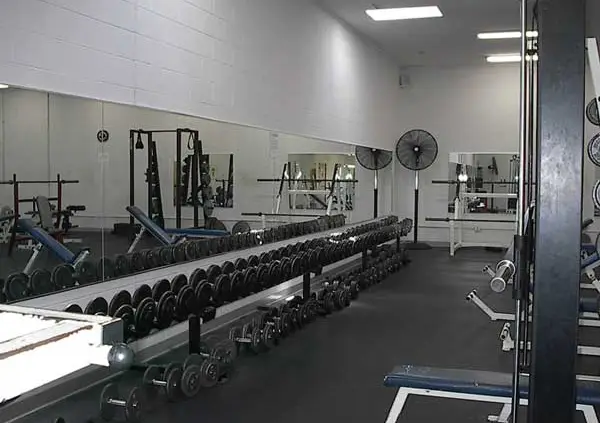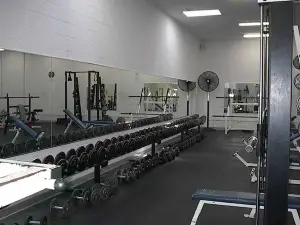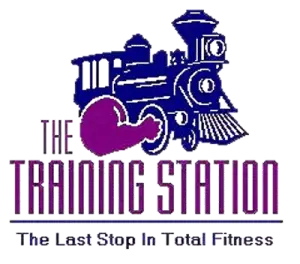
Workout Tips & Tricks
Ways to make your workout more efficient
Do Something to Make it Harder
 After the heavy set, when you can really control the weight, do something to make it harder or more intense don’t just go through the motions. Examples: Go slower, go faster, change the angle, reduce rest between sets, squeeze or contract harder, pause in the contracted position, etc. As the weight gets lighter you can get more creative. There are endless ways, just be careful, don’t try this with heavier weights.
After the heavy set, when you can really control the weight, do something to make it harder or more intense don’t just go through the motions. Examples: Go slower, go faster, change the angle, reduce rest between sets, squeeze or contract harder, pause in the contracted position, etc. As the weight gets lighter you can get more creative. There are endless ways, just be careful, don’t try this with heavier weights.
Reduce Rest Time
- Stay off your phone.
- Make Efficient Weight Changes.
- If you have 30 lb. weight changes (on each side), use 5’s & 25’s, or all 10’s. Then on your way down, changes are quick & easy. Sometime using larger plates can make weight changes too long, giving you too much rest. Unless you are making 45 lb. jumps you shouldn’t use 45’s at all. Don’t let your ego interfere with your workout.
- Think Ahead (when possible)
- Set up the next exercise while you are between sets or waiting on your partner.
- If you have a partner or partners, try to use 2 of the same pieces of equipment and rotate.
- Keep your weights nearby, if you will be using them on the way down.
Super Sets
Super Set = No rest in between sets
A group of 2 or more exercises done with out resting in between.
Example of a super set: Do a set of exercise # 1, then immediately with out resting do a set of exercise # 2, then exercise # 3, etc…
Speed up your super sets
Set up all the exercises before you start a super set.
Have all your weights and machines ready so rest is at a minimum.
Importance of Warm Up Sets
The first 3-6 sets on the first exercise for each body part are warm up sets. The reps are dictated for a reason. If you do more than the designated number, you will use up too much energy before you reach your heavy set. Then you won’t knowwhat your true max is. If you do less, you may not be warmed up enough, and put yourself at risk for injury
Working Around An Injury
Certain injuries are common when lifting weights, shoulders, elbows, wrist, etc. When one of these occur, you have to make little adjustments to prevent it from becoming worse and putting a complete hault to your progress. If necessary change the angle or subsitute exercises to minimize any discomfort.
Going to Failure
- It’s the last rep when:
- Someone helps you, even a little.
- You start getting sloppy or squirming.
- The muscle burn becomes completely unbearable.
100 Rep Sets
If you can get 25 or more reps without pausing, you can make it to 100 reps. At this point it is a battle of the mind. Pause a few seconds, go to your special place, then start again. Keep going, pausing when you have to, until you reach your goal.
When Adding Weight to the Stack
If the workout dictates a 5 lb. increment that is not on the weight stack, either round up or sit a 2 lb. & a 3 lb. dumbbell on top of the stack, one on each side of the cable, using 2 dumbbells instead of just one 5 pounder to keep the stack balanced (and not damage the machine). This also applies when adding extra weight to the stack, if the stack is 250 and you need 300, use two 25 lb. dumbbells instead of a 50.
When Doing Heavy Tricep Pushdowns
Set up the machine so the handle hangs about chin high (so you can get your weight over it), use a chain if necessary. Otherwise, you will be limited on the weight you can do by having to pull it down first.
Easy Ways to Get Hurt
Saying “One more” or doing multiple forced reps. I’m not saying snatch the weight up the minute they start to stall, wait for the start of negative movement then just help enough, that’s one forced rep. Don’t try another rep, even the best spotter can let you squirm just long enough to get hurt, plus a spotter pulling all of 300 lbs off someone or pushing on there elbows so hard they are doing the dumbbell presses for them will hurt someone.
Having someone hand you the weight or dumbbell because you can’t do it by yourself. If you can’t lift the weight into position on your own, then you shouldn’t be lifting that weight yet.
Getting help on the first rep, either by pushing your elbows or your wrist, especially on dumbbell press exercises. This only puts really heavy dumbbells you couldn’t control in the first place over your face or head. Not a good idea.
Doing half-reps because it’s too heavy (not to be confused with controlled partial reps). You should always attempt to do the full range of motion, from the stretched position to the contracted position. Doing only half of the movement, will lead to weak areas and flexibility issues, both of which can lead to injury.


